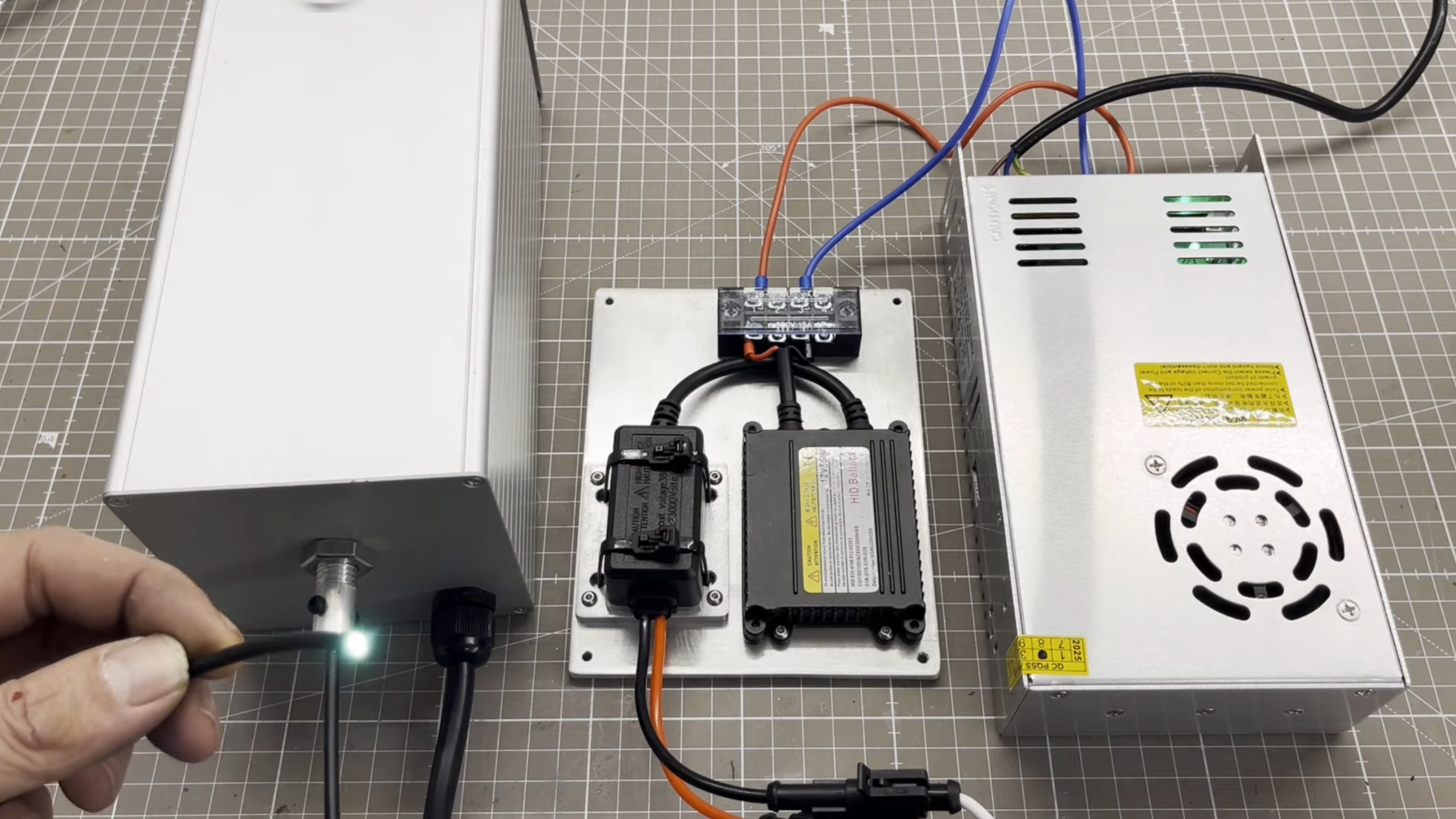Science
Innovator Constructs Xenon Lamp for Enhanced Spectroscopy

In a recent project, inventor Markus Bindhammer showcased the construction of a xenon lamp designed to improve the accuracy of spectroscopy. This innovative light source serves as a calibration tool for spectrometers, enabling them to correctly identify wavelengths by using characteristic peaks produced by the light source.
Spectroscopy relies heavily on precise calibration, typically achieved by referencing a known light source. While many hobbyists utilize mercury-vapor fluorescent lights, Bindhammer’s design offers a more versatile alternative. A xenon gas discharge generates a wide spectrum of wavelengths, making it particularly effective for absorbance spectroscopy. Furthermore, the xenon lamp produces several characteristic spikes in the infrared region, enhancing its utility for various applications.
Bindhammer’s light source is based on an H7 xenon bulb commonly used in vehicle headlights. The design features a concave mirror positioned behind the bulb to reflect and concentrate the emitted light. In front of the bulb, a pair of converging lenses focuses the light onto the end of an optical cable made from PMMA, which is particularly adept at transmitting ultraviolet light.
Components and Assembly
The assembly of this xenon lamp involves several key components. Aluminum brackets stabilize the entire structure, while the concave mirror is fashioned from a section of an aluminum pipe that has been cut open. The complete setup is housed within an aluminum case designed for durability and performance. To prevent overheating, a fan is integrated at one end of the case, with a light trap to minimize stray light from escaping through the fan’s outlet.
Although Bindhammer has yet to test the lamp with his unique spectrometer, early indications suggest that it should function effectively. His project reflects a growing interest in amateur spectroscopy and the exploration of more advanced light sources.
The advancements in DIY spectroscopy reflect not only the creativity of individuals like Bindhammer but also highlight the potential for hobbyists to contribute to scientific fields. By constructing their own equipment, enthusiasts can engage more deeply with the principles of spectroscopy and expand their understanding of light interactions.
As the field of spectroscopy continues to evolve, examining commercial scientific light sources alongside amateur creations can provide valuable insights into the technology’s future. The development of accessible and effective light sources will likely encourage more widespread experimentation and innovation in spectroscopy, enriching both amateur and professional scientific communities.
-

 Technology4 months ago
Technology4 months agoDiscover the Top 10 Calorie Counting Apps of 2025
-

 Health2 months ago
Health2 months agoBella Hadid Shares Health Update After Treatment for Lyme Disease
-

 Health3 months ago
Health3 months agoErin Bates Shares Recovery Update Following Sepsis Complications
-

 Technology3 weeks ago
Technology3 weeks agoDiscover 2025’s Top GPUs for Exceptional 4K Gaming Performance
-

 Technology2 months ago
Technology2 months agoElectric Moto Influencer Surronster Arrested in Tijuana
-

 Technology4 months ago
Technology4 months agoDiscover How to Reverse Image Search Using ChatGPT Effortlessly
-

 Technology4 months ago
Technology4 months agoMeta Initiates $60B AI Data Center Expansion, Starting in Ohio
-

 Technology4 months ago
Technology4 months agoRecovering a Suspended TikTok Account: A Step-by-Step Guide
-

 Health4 months ago
Health4 months agoTested: Rab Firewall Mountain Jacket Survives Harsh Conditions
-

 Lifestyle4 months ago
Lifestyle4 months agoBelton Family Reunites After Daughter Survives Hill Country Floods
-

 Technology3 months ago
Technology3 months agoUncovering the Top Five Most Challenging Motorcycles to Ride
-

 Technology4 weeks ago
Technology4 weeks agoDiscover the Best Wireless Earbuds for Every Lifestyle









